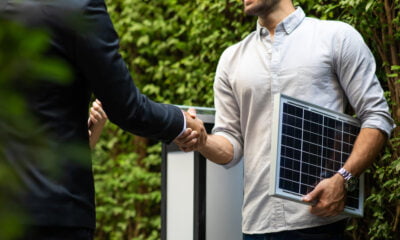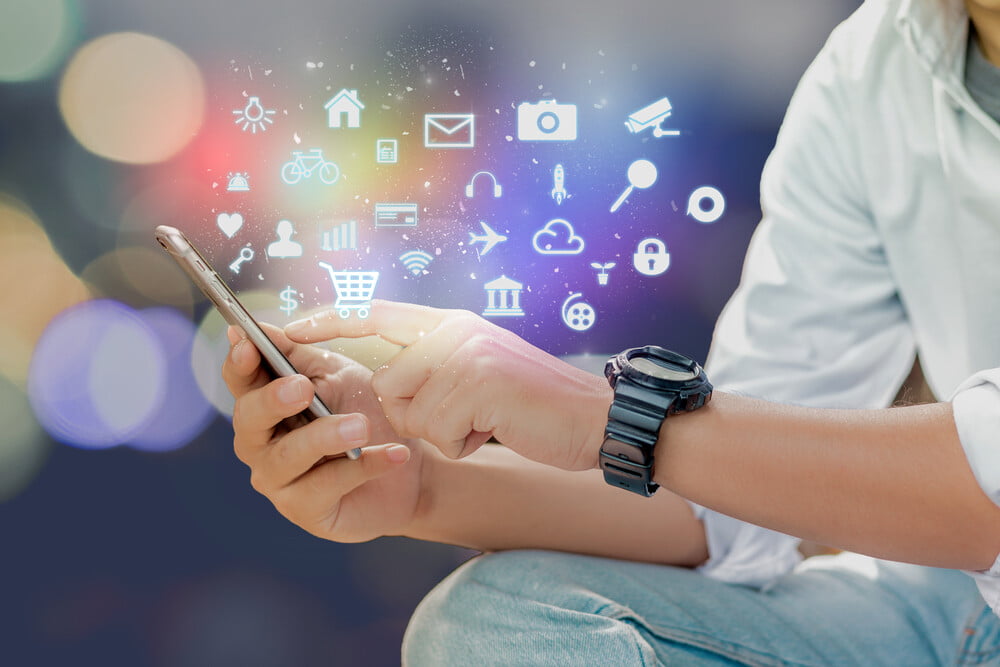
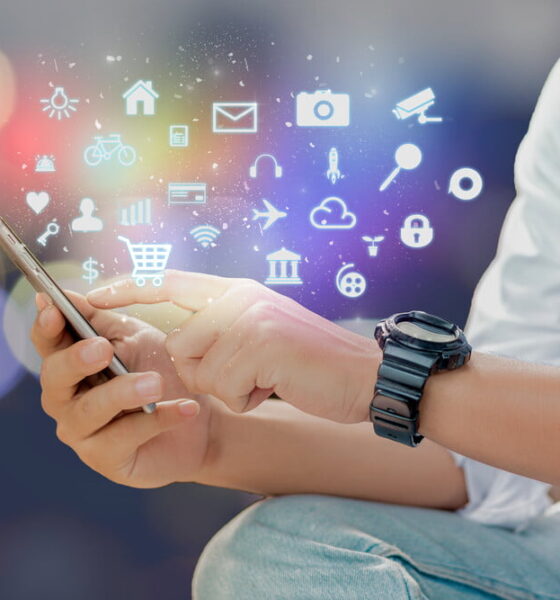
Features
The Incredible Role Of IoT Environmental Apps In The Times Of COVID-19
Environmental changes are happening at an unprecedented pace. A number of factors are influencing the direction of the environment. One of the factors influencing the fight against climate change is a growing number of IoT apps.
How Will IoT Apps Affect the Fight Against Climate Change?
The tide of COVID-19 has forced enterprises to rely on high-tech developments such as the Internet of Things (IoT) in everyday operations. The utilisation of IoT app development services helps businesses to adjust to the new reality and address the challenges brought by the coronavirus.
A number of companies that have made it their mission to fight climate change are using new apps to make things better. We previously wrote about four great sustainable shopping apps worth looking into. Apps like these can help reduce the acceleration of climate change.
According to MarketsandMarkets, global IoT market value heightened by the pandemic will increase to $243 billion by 2021. Current widespread adoption of the technology might have a lasting impact beyond COVID-19. The number of connected devices is estimated to reach 75.44 billion by 2025. Many of these devices are programmed to lower our carbon footprint, which can help mitigate the effects of climate change.
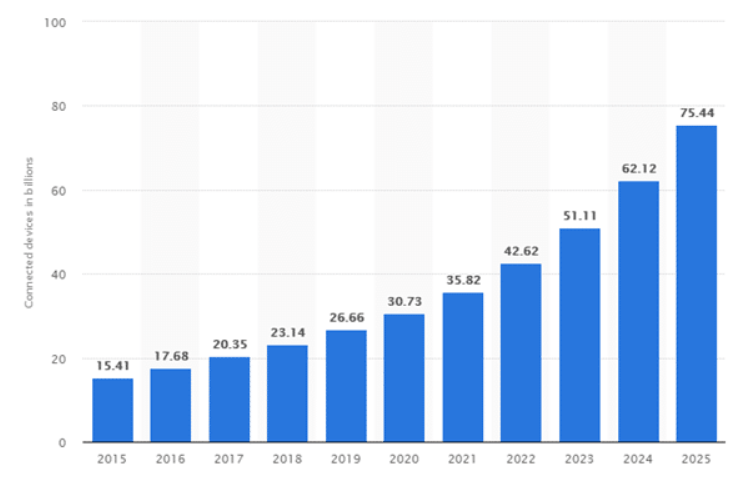
The world of interconnected devices helps businesses to gain the most out of exchanging data. Here are some ways that eco-friendly companies can thrive with these apps.
- Minimise expenses. IoT devices can significantly reduce maintenance costs by troubleshooting problems before they can impact business operations.
- Boost productivity. Analysing data throughIoT offers insights into which tasks enable more streamlined operations and which impair it.
- Open new business opportunities. With IoT-powered data, businesses can use it to analyse customer preferences and update or introduce new products and services.
- Provide flexibility. IoT technologies allow organisations to run business in the online world with remote employees seamlessly.
As we stated before, it is difficult to run a successful green business. Sustainable brands that use the right apps to accomplish the aforementioned benefits will be more likely to thrive.
Here are 4 most common applications of IoT apps, which help us to work, shop, seek medical services, and other things in the post-pandemic world.
1. Power remote work
41% of employees will not stroll back to the office right after the coronavirus is gone, Gartner reports. Jack Dorsey, Twitter CEO, has already announced that all Twitter and Square employees can choose to work remotely “forever”. Other companies — Zillow, Mastercard, and Facebook — have also followed such business strategy.
During such transition, businesses leverage IoT apps and tools to demonstrate efficient performance. As a matter of fact, work from home became possible due to the development of technologies and connected devices like remote computer access, cloud platforms, laptops, smartphones, etc.
In manufacturing, for instance, IoT enables getting the job done from distributed locations. Remote monitoring solutions, powered by IoT sensors and devices, track a machine’s condition. Instead of manual on-location examination, Industrial IoT sensors deliver real-time information and detect possible malfunctions.
2. Ensure safe workplaces
Even though many continue to work from home, other companies are slowly going back to the traditional work environment. Deploying technology-based safety measures in offices can mitigate the risk of the outbreak.
These IoT solutions can minimise the need for physical contact in the workplace and make the buildings safer:
- Touchless interactions
IoT solutions can help to control everyday objects — check-in systems, beverage and water dispensers, coffee machines, facility management and others — by gestures, phone-based controls or voice commands.
- Temperature screening
Connected thermometers can help enterprises to trace an increase in a person’s temperature. RamcoGEEK, a facial recognition technology, integrates with IoT based sliding doors and allows contactless attendance, enabling or restricting the access to the building based on the company policy and one’s temperature range.
Crowded places like airports can entail fast screening and real-time monitoring systems. Such systems conduct contactless body temperature measurement and send an automatic alert of persons with fever.
3. Contactless payments
According to MasterCard research, 74% of people around the world are eager to continue to use the contactless payment method once the pandemic is over. Belgium has also seen an upward trend towards contactless payments during the pandemic.
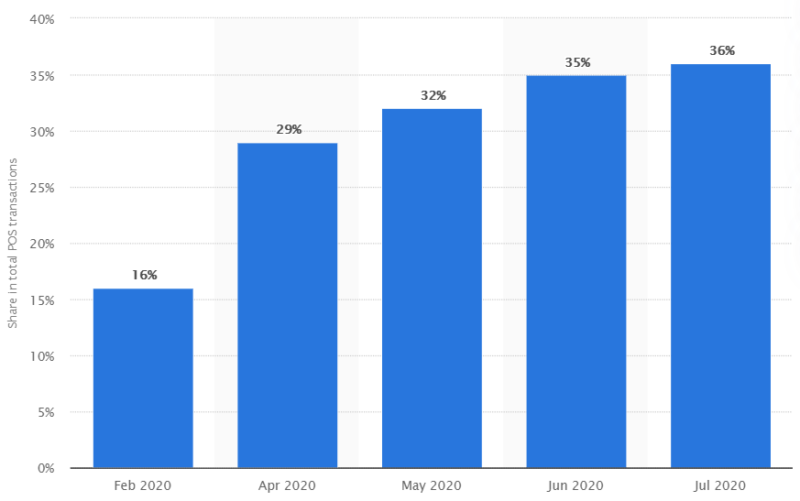
Integrated with IoT, contactless payments are replacing physical cards and introducing a new normal where people are making payments with the help of devices such as smartphones or watches. Moreover, such payments offer great simplicity for customers. One-touch secure payment with no pin code required reduces payment time during purchase.
Businesses will have to deliver to customers a safe and seamless payment experience. Thus, organisations who rely solely on physical cash in their business operations will have to adjust in order to survive in a competitive environment.
4. Health monitoring
Embracing IoT solutions in the healthcare industry helps to relieve healthcare workers and meet large scale patients care needs.
- Telehealth services
Remote patient’s consultations have seen an upsurge in the times of pandemic. For instance, Stanford Children’s Health Hospital have had up to 800 digital visits per day in comparison to 35 before the outbreak. A device equipped with IoT sensors monitors a patient’s condition and sent it to the doctor. Such video call consultations minimise the risk of infection and provide a needed treatment
- Digital diagnostics
IoT-embedded systems can also provide patients with self-monitoring. IoT device checks an individual’s vital signs, providing information about their general health. The utilisation of such devices during coronavirus benefits both patients and healthcare providers by speeding up diagnosis and disease treatment.
Kinsa, a health tech company, has introduced smart thermometer. It helps to detect COVID-19 outbreaks in the USA and fairly distribute health resources by collecting and analysing real-time data on consumers temperature.
- Remote monitoring
Among other IoT-powered systems, remote monitoring can help healthcare doctors to track patient’s condition and get such data as frequently as needed to get a better understanding of users’ state.
Livongo Health — a platform providing IoT monitoring of people with chronic conditions, who are more vulnerable to COVID-19. Moreover, in April, the company’s first-quarter revenue has gone beyond its prior guidance.
- Robot assistance
Robotic systems, which rely on sensors to understand their environment, has been broadly used for sanitation, disinfection, and delivery purposes, thus minimising physical contact and risk of spreading the disease.
Green Businesses Can Benefit Immensely from IoT Apps
Green businesses need a strong competitive edge to thrive in 2020. They should use technology to be eco-friendlier and more responsive to new challenges. Among other things, areas of appliance and utilisation purposes of IoT technologies vary widely:
- Smart retail
Applying IoT solutions to retail industry deliver better visibility into the supply chain for green businesses, helps to assess customer satisfaction, control food safety and track products.
- Smart farming
IoT technologies, combined with data analytics, provide valuable insights for eco-friendly farmers, such as detailed maps of resources or temperature and acidity of the soil. Hence, agriculture companies can improve general farming operations and crop protection.
The pandemic has drastically changed the way industries conduct their businesses. In order to get through the disruption, organisations have to adopt innovative technologies and reconsider their business models. IoT-embedded systems provide companies with insightful data and services, which help in gaining a competitive edge and decision-making processes.
All of these factors can be great for sustainable businesses. They will be more likely to thrive and help lower their carbon footprints.


 Environment9 months ago
Environment9 months agoAre Polymer Banknotes: an Eco-Friendly Trend or a Groundswell?

 Environment11 months ago
Environment11 months agoEco-Friendly Home Improvements: Top 7 Upgrades for 2025

 Features8 months ago
Features8 months agoEco-Friendly Cryptocurrencies: Sustainable Investment Choices

 Features10 months ago
Features10 months agoEco-Friendly Crypto Traders Must Find the Right Exchange




